Howdy! If you navigated to the tree page; I hope you expected to see some trees!
As we know, trees are pretty much everywhere. With no help from modern landscaping, the concept of tree blindness is introduced. It is interesting to see how our use of trees has changed from a source of survival to how aesthetically pleasing one looks next to the patio. In hopes that now even my tree blindness is cured, it’s time to introduce some trees!
I see this tree almost every day. It is stationed outside of my work and I actually park by it every time I go into work. Say Hi!
American Basswood
Tilia americana
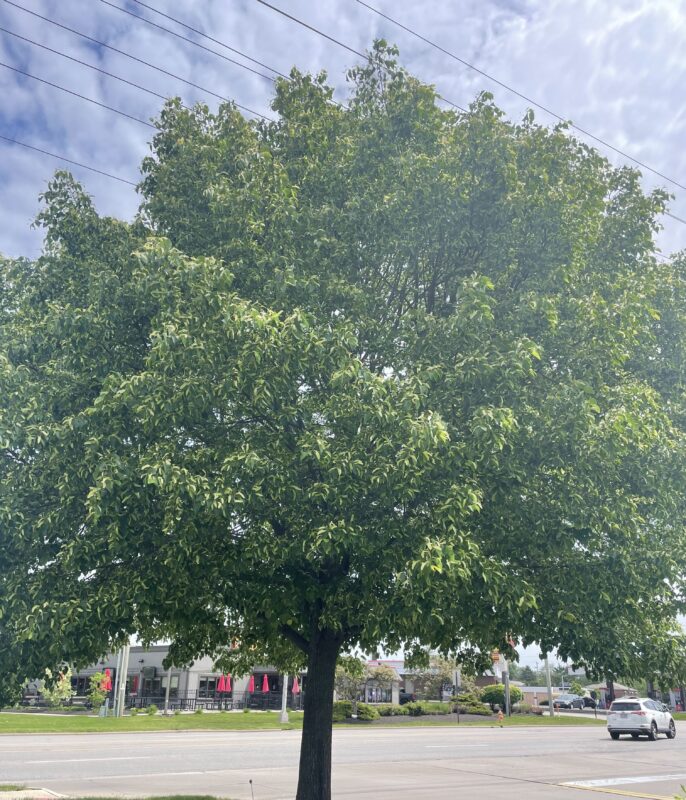
Let’s get a closer look at the leaves!
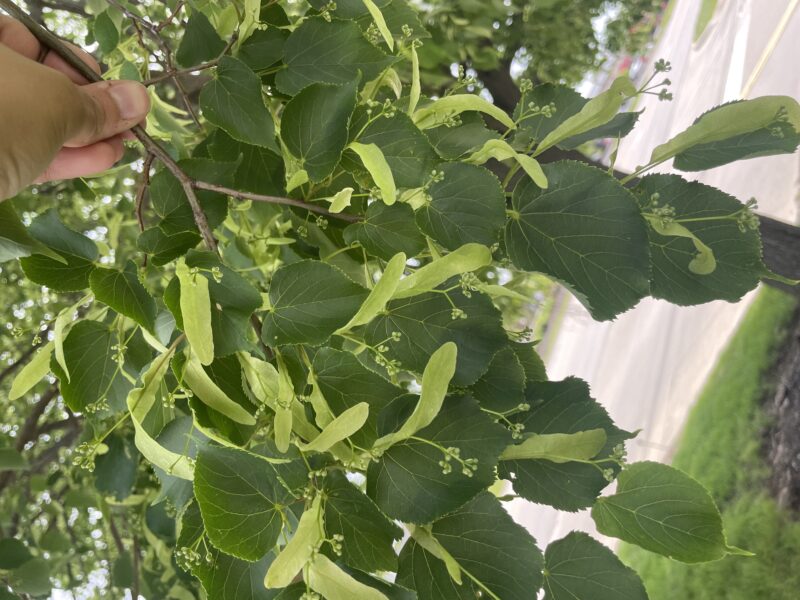
Nice!
This tree has alternate and simple, heart-shaped leaves that are fan-veined, as well as what seems like smaller leaves and buds flanking those heart shaped ones. The leaves are toothed and with all of these factors using the field guide, it lead me to basswoods. The field guide also states the difficulty of differentiating basswoods. It is an uplands growing species and the tree itself has several household uses. So, if your animals are tearing up your blinds (like mine does) you know what tree to look out for ;). Considering I had always gone to work and blew this basswood off as just a random tree, I guess we can really see how my tree blindness was playing out.
.
Let’s see…..who’s next?
Red Buckeye
Aesculus pavia
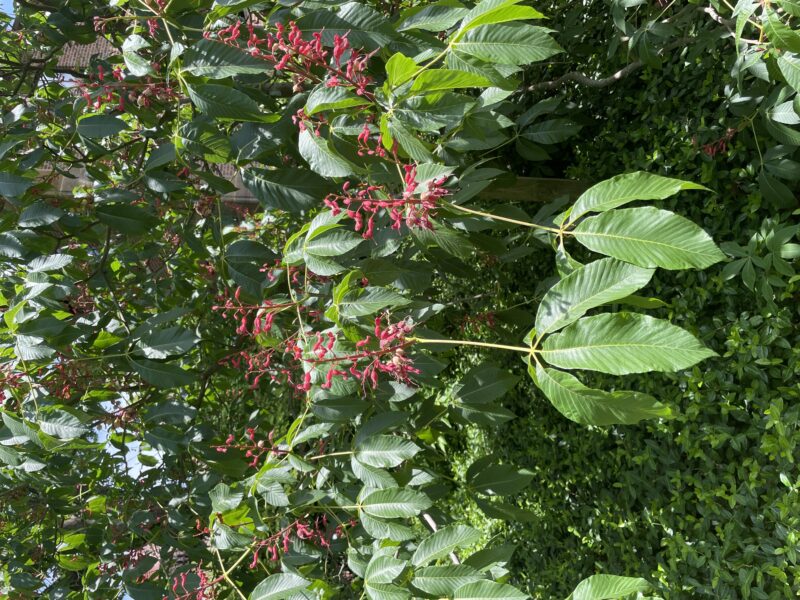
I’d know those palmately compound leaves anywhere.
It’s so beautiful! Take a moment to gaze at it! The red buckeye thrives in woody areas rich in nutrients! It has upright red flowers as shown with five fan/palmately compound leaves. I read that it grows under bigger trees! To be honest, I think flowers sometimes lessen tree blindness because their colors are so captivating. I found this tree walking around campus, which probably was not the best idea since it was most likely planted, but nonetheless beautiful and informative! I had never paid attention to the trees on campus but they really make it a work of art there!
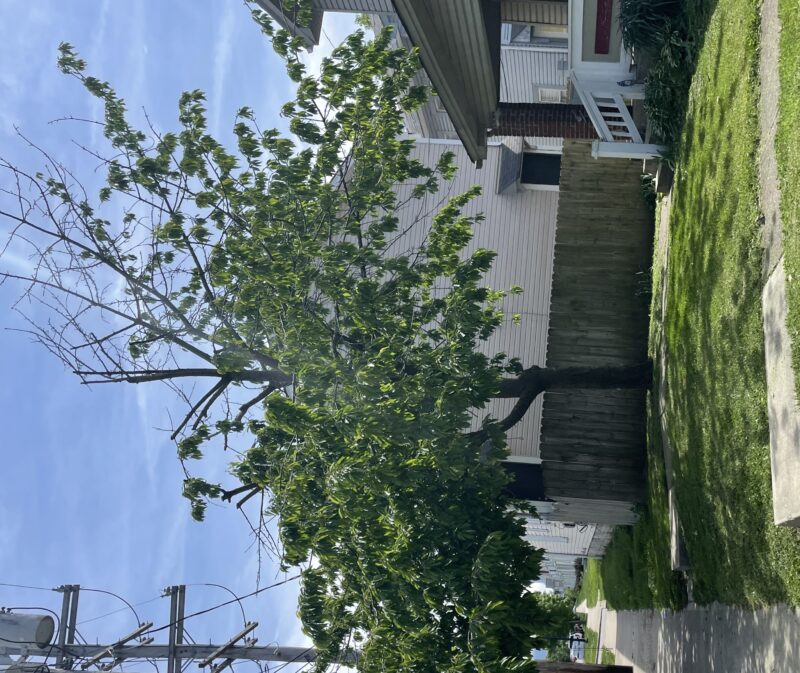
Mysterious neighborhood tree!
Now with this tree, I found it walking back from the bus stop after our plant class! I guess I was just so eager to start finding trees. So I guess we should look a little closer.
Sweet Cherry
Prunus avium

Much better!
These leaves are toothed as we can see, but they’re also quite large! Egg shaped with alternate and simple leaves. The largeness of the leaves as well as a comparison of other trees led me to cherries. I was not too sure how far into the season this tree is, but I started to notice those little red bulbs right where the leaves start! Cherries also like rich environments, and I have not lived in this neighborhood long enough to know how it got there!
.
So one day I decided to walk around tuttle park because well, it’s a nice place and also a great place to try and find a tree for this assignment. So the first one I see kind of stumped me.
Honey Locust
Gleditsia triacanthos
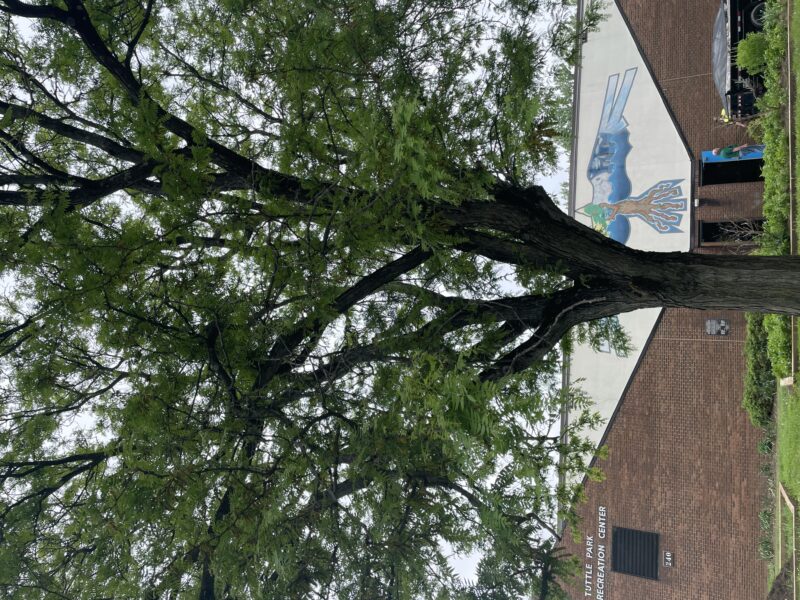
For necessary protocol, let’s hug this tree
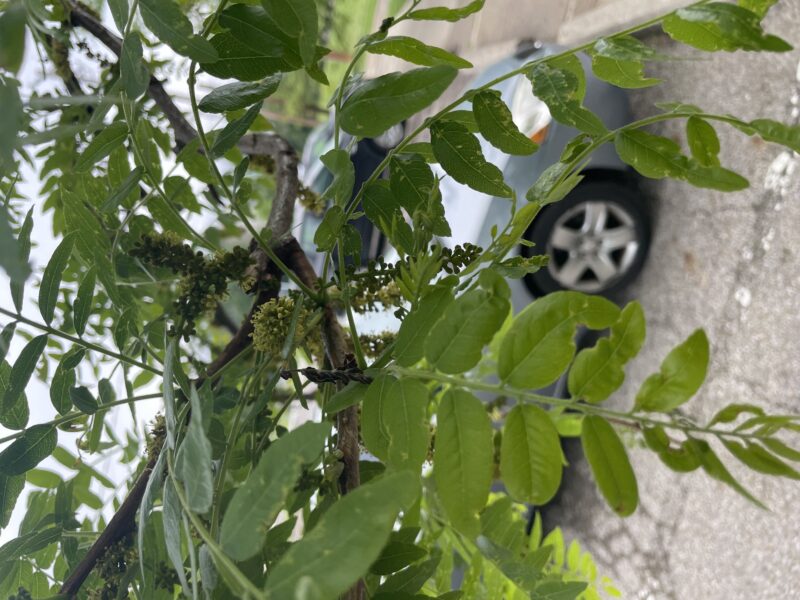
Wow! Some distinguishable traits!
The reason this tree stumped (get it? 😉 ) me so bad was it’s lack of thorns, now why thorns, you ask?
Our friend here has alternately twice compound leaves with pretty smooth edges and no teeth, nor are they lobed. There are also little green guys on there that are flowering. All of those qualities point to the honey locust, but where are the thorns?!?! Turns out there is a species of honey locust that is thornless which is pretty wacky to me! Talk about actual tree blindness, it took me a minute to identify this sucker, respectfully. Since this tree is very tall, it’s no question that it should grow in sunny conditions. It’s a good yard tree (especially since this one doesn’t have thorns) placed in moist soil.
On to the next!
Hawthorn
Crataegus spp.

https://naturewalk.yale.edu/trees/rosaceae/cratageus/hawthorn-48
WOAHHHH. You don’t want to get too close!!! Check those thorns out :/
Here we have some very obvious thorns with alternately patterned simple leaves that are lobed. This tree was also found at tuttle park! The thorns are an inch and sometimes over an inch long which could cause some serious stabbage! Our handy little book classifies this tree as a hawthorn, but the book does not specify the species of hawthorn trees! There are so many cool factors about hawthorns, such as using the berries for jellies or using the leaves in salads, if you catch them at the right time. Luckily this Yale website I found featured this same type of tree with tons of detail!
Up next, a tree I came across on my walk back to the bus stop! SPOILER ALERT: I was so shocked because I had never seen developing pine cones before, so it was really cool!
White Pine
Pinus strobus

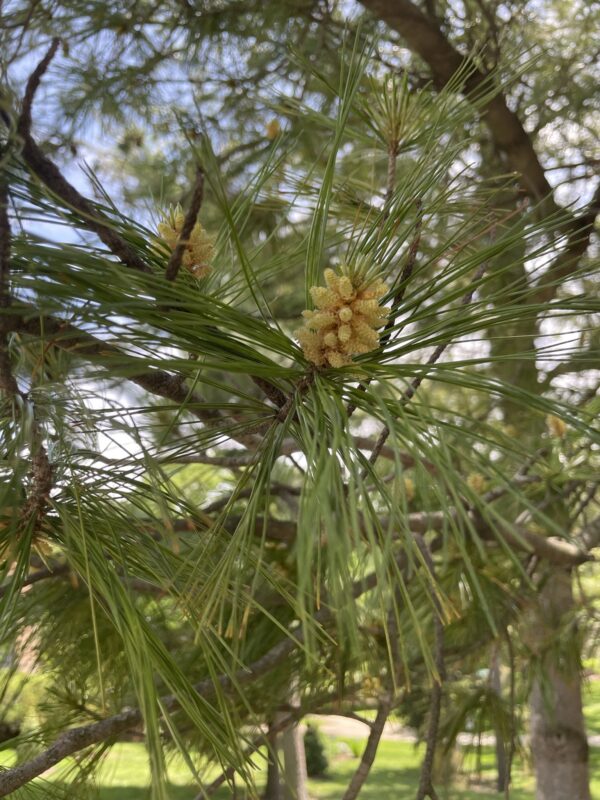
Speaking of a developing pine cone! This tree has needle like leaves in bundles with 5 to the bundle; a classic white pine. I remember having two huge pine trees in our front yard back home and my father would always make us pick up the cones so he could mow the grass. Talk about a pain. It’s a very large tree and is afflicted by a fungus as well as an insect according to the field guide. Their habitats are regions with steady rainfall, which makes sense as to why there are many in Ohio!
Yellowwood
Cladrastis lutea
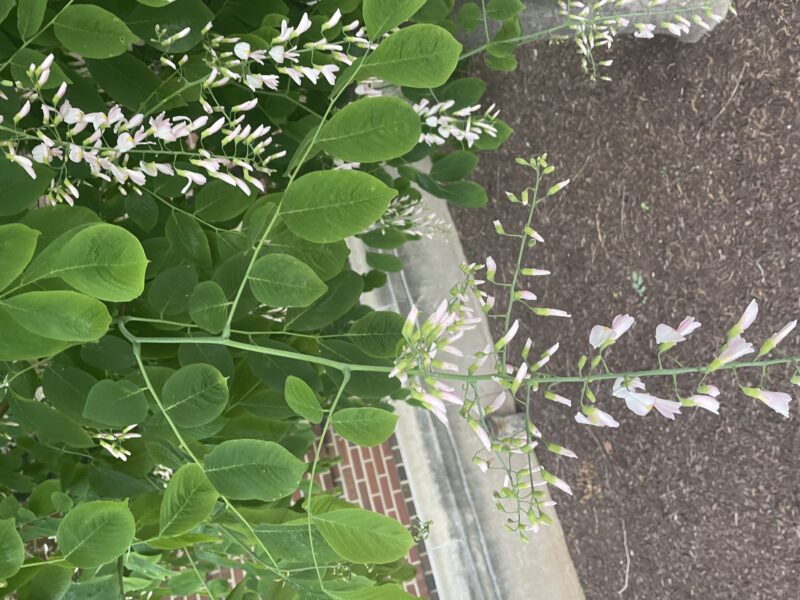
https://bernheim.org/learn/trees-plants/bernheim-select-urban-trees/yellowwood/#:~:text=NATIVE%20RANGE%20AND%20HABITAT&text=Yellowwood%20typically%20occurs%20in%20rich,is%20native%20to%20North%20America.
This very beautiful delicate pink flowered tree has alternately once compound leaves. Its leaves are smooth and has usually white flower clusters. Now, you’re probably wondering how it’s a yellowwood if its leaves are pink right? I thought the same thing. With a little more exploration on the internet, I found out that it is in fact still a yellowwood but a special “Perkins Pink,” yellowwood tree. This was a tree on campus that temporarily took away my tree blindness, because it did not catch me with sight; It caught me with smell. Talk about wonderful smells! The regular habitat for yellowwoods are limestone-y areas! The tree has been used by humans for several things such as gunstocks, carvings and even dyes.
Hackberry
Celtis occidentalis
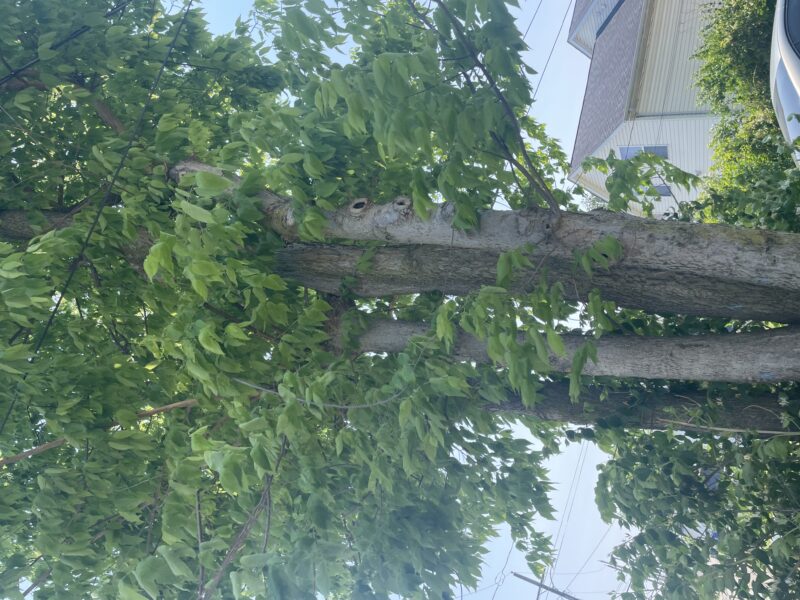
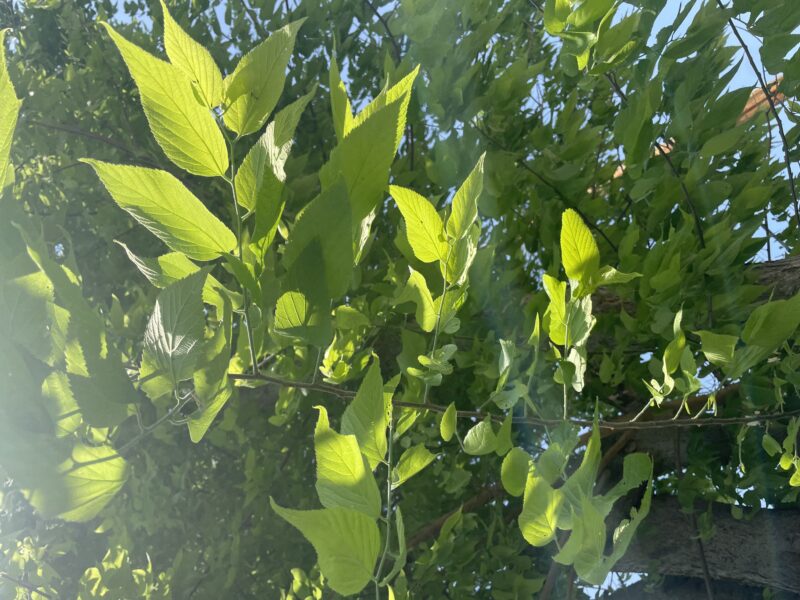
The hackberry has alternate simple leaves that are toothed and teardrop shaped. This tree is just outside of my house and the cool factoid I learned is that the hackberry is useful in urban landscapes, and thrives in them! It’s pretty cool because that is another distinguishable feature about them! Honestly, I’ve been quite blind to the trees around me especially this one in my backyard.
